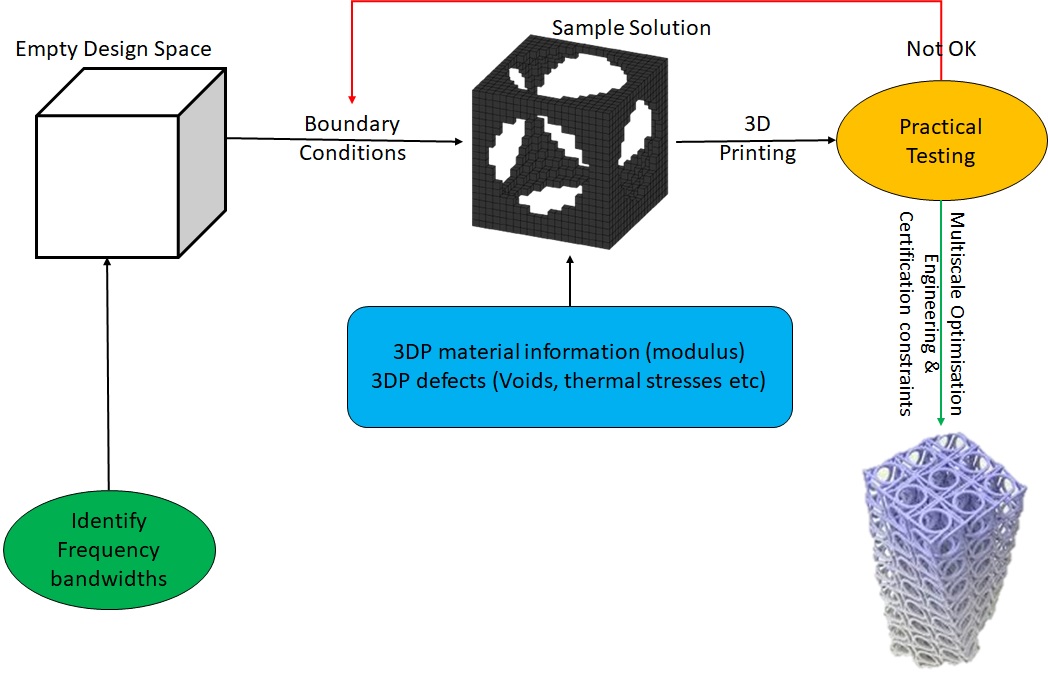Design of lightweight 3D printed aerospace components using metamaterials
Guest speaker: Mr. Krishnaraj Vilasraj BHAT (Materials & Structures Department, INTA)
Date: Wednesday, 21st February 2024. (12:00-13:00 CET)
Summary:
Functionally graded metamaterials (FGMMs) represent a class of advanced materials that combine the principles of metamaterials and functionally graded materials (FGMs). Metamaterials are synthetic materials engineered with unique physical properties, achieved through the careful design of their structures rather than relying solely on the properties of their constituent materials. Various subtypes of metamaterials exist, but for brevity, structural metamaterials are broadly divided into static and dynamic metamaterials. Dynamic metamaterials are uniquely suited to be used in various vibration rich environments, be it for wave-guiding or vibration suppression.
Additive manufacturing, also known as 3D printing, has emerged as a versatile and promising technique for fabricating complex structures. This method enables the layer-by-layer deposition of materials, making it particularly suitable for produ
cing FGMMs with tailored property distributions. By leveraging additive manufacturing, we can harness the potential of FGMMs to address various engineering challenges across different industries.

Therefore, my work will be based on combining FGMMs and 3D printing to engineer a prototype vibration suppression/mitigation device that can be placed between the interface of mission critical sensors/devices and the rest of the structure.
Several challenges exist in this endeavor. To begin with, there are no design tools available for obtaining the MM geometry for bespoke designs, nor for the multiscale analysis for the same. Also, unique approaches to MM implementation results in a wide variety of designs that, for practical purposes, cannot be codified into a library of materials. The method of 3D printing compounds these challenges by not having the same material properties as the conventionally manufactured materials, and multiple defects stemming from various sources when printed.
This project envisages a solution that involves having a multiscale tool for obtaining the design of dynamic MM and the entire structure given its requirements. This tool also must be able to integrate material properties and defect rates in its analysis to provide a final, defect redundant design.
Connection details (Zoom):
Link: https://rediris.zoom.us/j/99462694303
Meeting ID: 994 6269 4303
If you have any questions regarding the seminar, please contact Dr. Cristina Prados Román (pradosrc@inta.es) or Dr. María García Martínez (garciamam@inta.es). More information on the website of the API-INTA Association (https://www.inta.es/APIWeb/es/inicio/).


